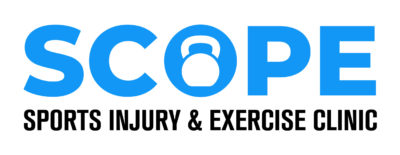Kettlebell training has been an essential part of my training for the past 3 years. Like most people, I started training with kettlebells with no real understanding of how to use them or benefits they would provide my body. Luckily for me I found a Strongfirst Coach who held me to high standards with my technique and provided excellent programming. When I started training I had been suffering with back pain for about 3 years. I did not start training with high expectations as my back pain had failed me with other coaches and at other gyms previously. I started slowly with a focus on quality movement and avoiding high levels of fatigue and progressively added load and power until the constant back pain seemed to just melt away. Since then, I have incorporated kettlebell training into my clinical practice. They are a staple for much of the rehab I prescribe as well as an easy progression into strength and performance training. Below are three reasons why I love the kettlebell swing for treating back pain.
- Reflexive strength
In the context of rehab and lower back pain, ‘core strength’ is often blamed. The exercises often given for ‘core strength’ are usually around working individual muscles around the abdomen. This is a problem because if our goal is to increase ‘core strength’ it should not be to consciously engage muscles. Core strength should be reflexive, it should just happen when we do the tasks we want to do. If we think of walking as an example, we do not think of activating any muscles, we just walk. If we want to create an effective rehab program we want exercises that create ‘reflexive’ strength. The kettlebell swing does this very well. The momentum and speed of the swing does not allow us to be think of ‘engaging’ individual muscles, rather we practice and refine a movement and create ‘reflexive’ strength.
- Develops Glute and Lat strength for postural support
The glutes and lats are the ‘workhorses’ of movement and posture. They are amongst the biggest muscles we have and highly important to being strong and moving well. The glutes provide extension of the hip and provide the ability to maintain an upright posture. The lats provide an extremely strong connection of the upper and lower body. As these muscles provide so much support to the body, it is no surprise that they tend to fire together. A strong, powerful swing builds a strong connection between the lats and glutes and also develops powerful muscles for better posture and strength.
- Seamless progression into strength and conditioning training
Rehab and strength and conditioning are not too dissimilar. Rehab is usually provided after an injury and is done (generally) with lighter and more controlled exercises. Rehab is about building the body back up. Strength and conditioning is about pushing the bodies limits (on occasion) as well as maintaining strength and fitness. I view the transition from rehab back into training as ideally a relatively seamless one. Meaning that rehab should take us to a point where going back to training is not a big step. The kettlebell is a tool that can be used throughout the entire spectrum, from rehab to performance. All we have to do is modify the rehab/training program to the level the athlete is at.
The kettlebell is an exceptionally powerful piece of gym equipment that, when utilized in the correct way with good programming and technique can be highly effective for rehab of the spine and a great preventative for back related pain. Slowly and progressively learning how to use a kettlebell with daily meaningful practice can drastically help you build real strength for long term health.
Want to know more about our services? Check out the links below or click here to book now
